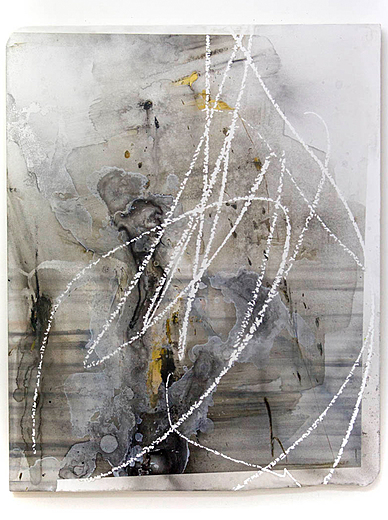By deliberately removing the context of art history from the canvas, Masaki Okuten shuts off the possibility of his work being overinterpreted influenced by the art historical background, yet focuses on pictorial expression in order to encourage people to enjoy the work with a wider and universal sense.
Okuten believes the encounter with the artwork is an accident like the natural encounter between people, and by cutting the canvas and modifying the support, the foreign matter that stands out in the space where the work is installed gives off a strong presence and materiality in his works. By deforming edges of a rectangular piece of paper, he encourages the viewer to dive into the painting space freed from the rectangular frame.
In order for the viewer to recollect memories and sensations of the past like their own childhood, Okuten applies layers of paints on the canvas so that viewers can recall and interact with the clues of the memory to the closest surface of the canvas covered by layers of paints. By removing the masking on the top of the layers in the end, the finished work leaves a white line that implicates the multiple layers of the paints.
The painting space, where only the white lines and effects are left and the centre is missing, is like an absent portrait in which only the signs of the person are removed. This is a manifestation of the attitude of wanting people to see the traces of others drawn on the screen in a high-purity state by not leaving their presence in the work. In a series of productions, the artist takes an approach of erasing his existence from the work, but there are still some traces and signs of life.
 © Masaki Okuten
© Masaki Okuten